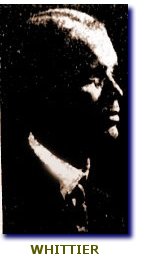Thursday, December 23, 2010
Page 15
REMINISCING (Column)
Wilcox Building Tenant Attains Distinction as Law Professor
By ROGER M. GRACE
Clarke Butler Whittier, one of the original tenants of the Wilcox Building in 1896, attained prominence—but not in Los Angeles. He did maintain a practice here that year, but that was his only contact with the city.
As he was later to recount (in an unidentified paper quoted in “A brief history of the Stanford Law School, 1893-1946,” published by the school in 1961):
“I had graduated from Stanford with history as a major subject in 1893. The next two years I was a student in the Harvard Law School, and after a year in absentia, as was then allowed, during which I practiced law in Los Angeles, I received my LL.B. in 1896. The year 1896-7 I was a graduate student in history at Stanford and completed the courses in ‘Education’ required for the high school teacher’s certificate.”
Whittier became a law professor at Stanford in the fall of 1897, remaining an educator until his retirement in 1937. Whittier was co-editor of a leading casebook on common law pleading and author of numerous law review articles.
The year after his
arrival
at the Palo
Alto
campus, he became the leader of a student-faculty action committee. The Oct. 14, 1898, issue of the San
Francisco Call reports Whittier’s election the previous
night as president of the Stanford University  Anti-Taxation Club. Though an
endowed, non-profit institution, Stanford, being privately owned, was subject
to taxation of its real and personal property.
Anti-Taxation Club. Though an
endowed, non-profit institution, Stanford, being privately owned, was subject
to taxation of its real and personal property.
The article says that the election of Whittier took place at a student rally at which “[m]embers of the alumni were present to intensify the Stanford spirit and assist in the formation of plans for the movement to free the university from the burden of taxes that is impairing its usefulness.”
An Oct. 21 piece in the Los Angeles Times observes that “[t]he purpose of the meeting is a matter of importance to the whole State of California,” explaining:
“The annual tax on the university amounts to $60,000 [the equivalent to $1.6 million today], which is just that much life sapped from its strength….Stanford is a free institution, and was founded by [the late U.S.] Senator [Leland] Stanford in order that every child of the State might have the birthright of a free education. This university is one of the few of its kind in the world which is burdened by taxes. It now faces alternatives; either removal of this burden, or the charging of tuition, such as Harvard and Yale impose. It is to prevent the latter that this club has been organized. The only way by which the end may be accomplished is by Constitutional amendment….”
Such an amendment was approved by voters on Nov. 6, 1900. It authorized special legislation to exempt Stanford from taxation…referring to the campus as “the Palo Alto farm as described in the endowment grant.” Legislation followed.
A different constitutional provision today shields from taxes Stanford and the Huntington Library and Art Gallery in San Marino.
Whittier taught at Stanford until 1902, when he joined the original faculty of the law school at the University of Chicago. Five years later, he became part of a rather bizarre movement there.
Appearing in newspapers across the globe is this July 24, 1907, pronouncement by University of Chicago Prof. Frederick Starr:
“Children should wear no clothing until they are 10 years of age. I mean, not a stitch of clothing. This is right on both physiological and moral grounds.”
Reports note that several professors and their families would participate in an experiment with the theory at a residential development called “Paradise Flats.”
Whittier and his wife and their 6-year-old daughter were to become participants.
In 1911, Whittier paid a visit to “the farm” where he was feted by former students at a banquet.
The March 22 issue of the San Francisco Call reports:
“That cases should be tried on their merits alone; that there are too many reversals of decisions because of technicalities. Which do not inflict injustice on either party, and that courts should urge simpler methods in pleading and discourage voluminous briefs, are some of the changes Professor Whittier said he favors in American law practices. He also said that one case in every 15 is reversed in the United States, while but one case in every 250 cases is reversed in England.”
A pioneer of the concept of “notice pleading,” Whittier pointed out in a 1918 article in the Harvard Law Review that one out of four cases in the United States was scuttled at the pleading stage, as opposed to one out of six at common law.
An article of July 7, 1914, in the San Jose Mercury News announces that Whittier, “known to be one of the leading law instructors in the United States, has accepted a permanent position as professor of law in the Stanford law school.”
He taught there for the next 23 years. Whittier died in 1943.
Copyright 2010, Metropolitan News Company